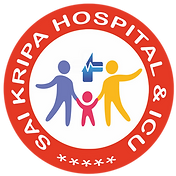Pediatric Ophthalmology
Pediatric ophthalmology is a subspecialty of ophthalmology that focuses on the diagnosis and treatment of eye disorders in infants, children, and adolescents. Pediatric ophthalmologists are trained to address a wide range of eye conditions unique to this age group. Here’s an overview of pediatric ophthalmology:
Common Pediatric Eye Conditions:
- Strabismus: This is a misalignment of the eyes, which can result in crossed eyes (esotropia) or outward drifting eyes (exotropia).
- Amblyopia (Lazy Eye): Amblyopia occurs when one eye doesn’t develop normal vision due to factors like strabismus, significant refractive errors, or visual deprivation.
- Refractive Errors: These include nearsightedness (myopia), farsightedness (hyperopia), and astigmatism, which can be corrected with glasses or contact lenses.
- Congenital Cataracts: Clouding of the eye’s lens at birth or in early childhood, which can affect vision development.
- Ptosis: Drooping of the upper eyelid, which can obstruct vision.
- Blocked Tear Ducts: Congenital or acquired obstruction of the tear drainage system can lead to tearing, discharge, and eye infections.
- Retinopathy of Prematurity (ROP): A condition that affects premature infants and can lead to vision problems or blindness if left untreated.
- Pediatric Glaucoma: Increased intraocular pressure in children, which can be congenital or acquired, leading to optic nerve damage.
Diagnostic Techniques:
- Pediatric ophthalmologists use a variety of specialized techniques and tools to examine the eyes of children, including visual acuity testing, eye movement assessment, and eye exams tailored to the child’s age and developmental stage.
- Additionally, they may use drops to dilate the pupils for a more comprehensive evaluation.
Treatment and Management:
- Treatment approaches vary depending on the specific condition but often include:
- Prescribing corrective eyeglasses or contact lenses.
- Patching the stronger eye to encourage the development of the weaker eye in cases of amblyopia.
- Conducting eye muscle surgery to correct strabismus.
- Performing cataract surgery or glaucoma procedures when necessary.
- Providing guidance and support for parents to manage and support their child’s eye care needs.
- Treatment approaches vary depending on the specific condition but often include:
Developmental and Behavioral Aspects:
- Pediatric ophthalmologists are well-versed in addressing the developmental and behavioral aspects of children’s vision. They work closely with pediatricians, educators, and other healthcare professionals to ensure a holistic approach to care.
Ongoing Monitoring:
- Children’s eye conditions may change as they grow, so ongoing monitoring is often necessary to ensure their visual health and development are on track.
Early Intervention:
- Timely diagnosis and intervention are crucial in pediatric ophthalmology to prevent permanent vision impairment or loss.
Parents or caregivers who suspect any eye issues in their child, such as misalignment, vision difficulties, or eye discomfort, should seek evaluation by a pediatric ophthalmologist. Early detection and treatment can significantly impact a child’s visual development and overall quality of life. Pediatric ophthalmologists play a vital role in ensuring that children receive the appropriate care for their eye health needs.






